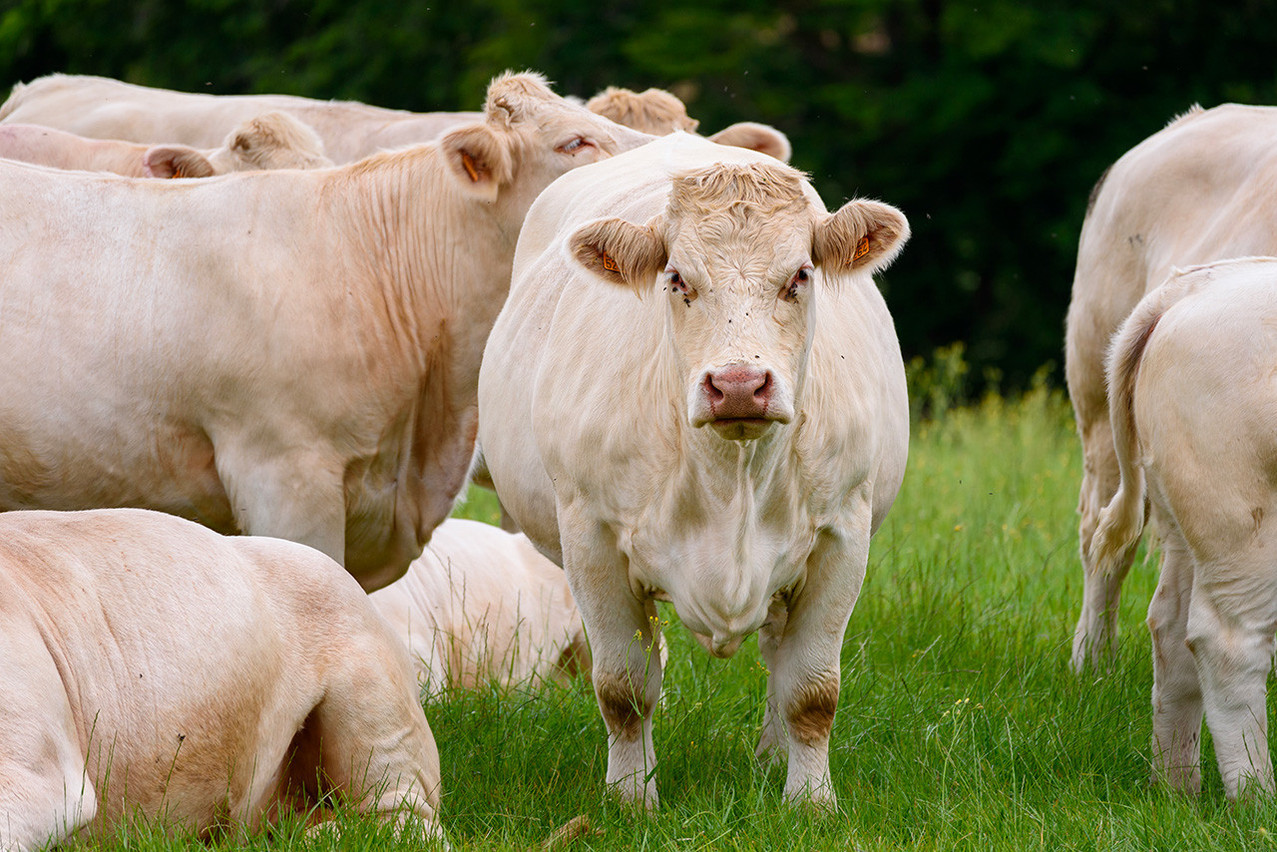Methane from agriculture, particularly cattle farming, has a significant impact on global warming. It is a much more potent greenhouse gas than carbon dioxide, and makes a direct contribution to climate change of around 30%. On a global scale, its main sources are agriculture (around 80%) and waste (around 11%). In Luxembourg, between 1990 and 2019, the agricultural sector was responsible for 70% to 80% of national methane emissions, the second biggest contributor to climate change.
In Luxembourg, the subject is taken seriously, and the Chamber of Deputies even made it the subject of a scientific paper in 2022. It shows that methane emissions in the country come mainly from three sources: agriculture, energy and waste. When this methane comes from livestock farming, it is mainly due to ruminants (like cows) and the management of livestock effluents. In the digestive system of cattle, micro-organisms produce methane during enteric fermentation. But methane also escapes during the decomposition of effluents such as slurry or manure. In a cow’s rumen, methane is produced in the same way as in a biogas plant, to produce energy.
Although the production of methane by cattle is a natural process, it is nonetheless a problem, as this gas contributes to climate change and the greenhouse effect. Over the last few centuries, methane concentrations in the atmosphere have almost tripled compared to pre-industrial levels. According to the Chamber of Deputies report, 60% of these emissions are “anthropogenic,” meaning they’re caused by humans.
In Luxembourg, the challenge is even greater, as “there are few opportunities to reduce methane emissions,” according to the study carried out by the Chamber of Deputies. These emissions actually rose by 6.5% between 1990 and 2019.
Rapid action on global warming
Compared with carbon dioxide, which also contributes to the greenhouse effect, methane has a different effect on the atmosphere. Its lifespan is much shorter than that of carbon dioxide, but “its global warming potential over 20 years is estimated to be 84 times greater than that of CO2, whose lifespan can exceed a few hundred or thousands of years in the atmosphere,” explains the note by the Chamber of Deputies. And it is precisely because of its short lifespan that it can reveal enormous potential in terms of reducing emissions. “A reduction in emissions would lead to a reduction in its atmospheric concentration within a few decades, and would therefore have a rapid and significant effect on atmospheric warming.”
Reducing these methane emissions is no longer an option. The Paris Agreement aims for climate neutrality (zero net GHG emissions) by the middle of the 21st century, and at Cop26, one hundred countries--including Luxembourg--committed to reducing these emissions by 30% by 2030. An international observatory, the International Methane Emissions Observatory, has also been set up. But how can this be achieved? According to the scientists, the first things to consider are improving productivity, improving effluent management and limiting livestock numbers on the part of farmers.
In terms of effluent management, recovering and using methane is an interesting avenue. Biomethanisation, using installations such as methanisers that reproduce the process that takes place in a cow’s rumen, can improve the ecological balance sheet, since livestock waste, for example, can be fed into the digester of a methaniser to produce biogas, which can then be used to produce electricity or heat, as well as digestate, an excellent fertiliser. But in Luxembourg, this type of facility has not been a great success, and “the number of biogas plants has stagnated or even declined in recent years,” said the chamber in its report. However, the Luxembourg government has set itself the target of recovering 50% of livestock effluent as part of its national biogas strategy. According to the latest version of the Recovery and Resilience Plan, by 2024 the country will have 23 biogas plants, 20 plants with cogeneration and three plants that convert biogas into biomethane.
Consumers/farmers: shared responsibility
According to the Chamber of Deputies, which examined the issue, “responsibility for reducing emissions from agriculture must be shared and assumed by both farmers and consumers.” It therefore advocates a “multi-dimensional” approach, but also stresses that “to date, there is no effective and approved practice that would make it possible to significantly reduce emissions from enteric fermentation without reducing production.”
Consumers also have a role to play by adopting a more sensible approach to meat consumption and reducing food waste. “In Europe, annual per capita consumption of animal products is not falling, even though the carbon footprint of a vegetarian diet is lower than that of an omnivorous diet,” notes the Chamber of Deputies.
Another approach, put forward earlier, would be to limit livestock numbers, especially cattle, since they are the main methane emitters. “Fewer animals also means fewer methane emissions during digestion, as well as less slurry and manure,” says Luxembourg's National Energy and Climate Plan (PNEC). The national strategic plan for the Common Agricultural Policy is along the same lines, proposing to support farmers who have voluntarily taken steps to reduce the number of cattle on their farms. Other avenues are being explored, such as adding nutritional additives to ruminant rations.
(The series continues on Thursday with the fourth instalment: why you should eat organic)
This article was originally published in .
